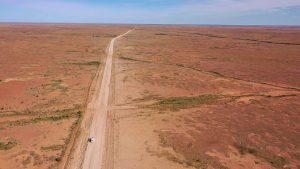What are dynamic risk assessments?
Dynamic risk assessment is the practice of mentally observing, assessing and analysing an environment while we work, to identify and remove risk. The process allows individuals to identify a hazard on the spot and make quick decisions in regards to their own safety.
What is a dynamic risk assessment?
A dynamic risk assessment is defined as the continuous process of assessing risks in changing environments or workplace situations. This involves identifying any potential hazards and assessing the risks associated with them. This happens in real time so that the appropriate measures can be taken to mitigate those risks.
Dynamic risk assessment is the practice of mentally observing, assessing and analysing an environment while we work, to identify and remove risk. The process allows individuals to identify a hazard on the spot and make quick decisions in regard to their own safety.
Whilst risk assessments are a critical process undertaken by organisations of all sizes to minimise the likelihood of injuries and accidents, dynamic risk assessments take this a step further. The dynamic risk assessment process involves continuous monitoring in real-time. By doing so, organisations can respond quickly to changing circumstances and address emerging risks promptly. This proves particularly successful in high-risk industries such as construction and utilities.
Key features of dynamic risk assessment include:
● Monitoring tasks continuously
● Proactive risk mitigation, responding to current circumstances
● Involves employees at different levels of the organisation

The UK’s most stressed workforce
New research reveals where the most stressed workforces are in the country. Stress plagues millions of us all over the world, and the latest figures suggest that we’re becoming more stressed than ever before.
… Read More

Employee safety in Australia’s signal black spots
The StaySafe app gives employers visibility of the location and safety status of lone workers in an emergency and allows them to check-in safely once they have finished a lone working or travel session. … Read More

The benefits of satellite tracking
Satellite trackers play a crucial role in keeping staff safe in several ways, especially in hazardous or remote work environments. Here are some key ways using a satellite tracker can contribute to employee safety. … Read More
Why are dynamic risk assessments important?
While steps can be taken to reduce and eliminate workplace hazards, there are some risks that are unpredictable and difficult to control. For example, an aggressive member of the public entering a retail store, or human error creating a trip hazard on a work site.
For remote and lone workers operating within irregular environments such as client’s homes, a formal risk assessment is unlikely to have been carried out by the business. Yet when entering unknown environments, particularly behind closed doors, the lone worker could be met with a range of hazards from hostile visitors, animals, trip hazards and even harmful substances.
In any of these situations, the ability to carry out a dynamic risk assessment allows the employee to identify a potentially dangerous environment or situation and take the appropriate steps to leave the environment or remove the risk before it causes an accident or incident.
It is important to note that dynamic risk assessments should in no way replace risk assessments carried out by the business. Risk assessments are a legal requirement and should be carried out by the employer before employees enter the workplace. If the workplace cannot be risk assessed, the job role still requires a risk assessment.
Take a look at our advice on carrying out a risk assessment.
Take a look at our advice on carrying out a risk assessment.
How does dynamic risk assessment work?
There are three stages to dynamic risk assessment, including:
1. The identification of potential hazards by observing the workplace environment, work processes and employee behaviour to identify any of these hazards
2. Analysis of risk by evaluating each of the identified hazards based on their severity and potential likelihood to occur.
3. Implementation of control to prevent the risk from occurring. This may include additional training, new equipment or processes.
The above will differ for organisations in different industries but the general principle remains the same. Another important point to note is that dynamic risk assessment may identify hazards that the organisation does not currently have the means to prevent. So, in this instance, it would be advisable to stop any work until this can be resolved.
When is a dynamic risk assessment used?
This type of risk assessment process is used in industries where risks are continuously changing. This includes construction, utilities and lone workers who are completing work-related activities without the assistance of a colleague.
● Lone worker dynamic risk assessments
● Dynamic risk assessments for emergency service personnel
● Construction worker dynamic risk assessments
● Delivery driver risk assessments
Benefits of performing a dynamic risk assessment
First and foremost, dynamic risk assessments benefit all levels of an organisation. From the workers most at risk to the board of directors looking to ensure the safety and wellbeing of their employees.
Here are just a few of the benefits afforded to organisations using dynamic risk assessments:
● Reduced costs: Accidents cost organisations money and this could be in the form of fixing damage or supporting an employee in their recovery. Fewer accidents make it more likely to expect a reduction in costs.
● Enhanced communication: Risk assessments encourage communication and collaboration between employees. This can improve workplace culture too.
● Organisations can reduce downtime by identifying problems in processes that could slow employees down. Improving operational efficiency to keep employees safe means they know exactly what and how to approach each situation.
● Improved safety: this makes it a better place to work and is a number one priority for many organisations
How to help lone workers carry out their own dynamic risk assessments
It’s important to equip lone workers with the necessary skills and knowledge to enable them to proactively carry out their own dynamic risk assessments when they are working.
Lone workers face unique and ever changing challenges, so it’s important that the employer has given them the training they need to identify risk in their job.
1. Standard risk assessment training should be undertaken so that lone workers understand the principles behind assessing risks and how to identify hazards
2. Dynamic risk assessment training can then be provided to drill down to this aspect of continuous risk assessment and monitoring
3. Implement communication and reporting procedures so that the lone worker can safely and quickly communicate with their employer about any risks or hazards they are facing. It is also important that employers are aware of the safety of their lone worker, so that if something should happen, they can act efficiently. This can save lives.
4. Provide practical training so that the lone worker can be confident before they are in a real-life situation
5. It is important that organisations employing lone workers provide regular updates and training to ensure dynamic risk assessments are carried out and managed effectively and efficiently
Tips for performing a dynamic risk assessment
The ability to carry out dynamic risk assessments instinctively, requires a level of professional employee training. However, there are some simple tips that can be followed to get your employees started with dynamic risk assessment.
Assessment should begin before entering the work environment, whether this be a client’s home or an industrial site.
If you are being met by a client at the door, assess their emotional state and look out for signs of distress, aggression and drug or alcohol influence. If any of these signs are observed, make an excuse and leave.
Before entering a site, observe the environment for any hazards such as physical obstructions, slippery surfaces or unstable structures. Report any of these hazards to a site manager and ensure they are contained or removed before working on the site. If working alone, leave the environment and report the hazards to a supervisor or manager.
Upon entering an environment, take note of any exit routes in case you need to leave quickly. Try to create a clear path to the exit and again, if something doesn’t feel right, make an excuse and leave immediately.
Our best tool for identifying risk is our instinct. We pick up on ques both consciously and subconsciously which can cause us to feel uneasy, unsure or afraid. Even if the danger is unclear, employees should be encouraged to trust their instincts and leave the environment even if it prevents them from completing their work.
Many individuals who have been attacked or suffered an accident at work, identified warning signs beforehand and ignored them due to pressures to get the work done or a lack of confidence.
Dynamic risk assessment is a skill that is most effectively learnt through training and practice. If your employees work in high risk areas, remotely, alone or in changing environments, you should consider providing training that includes dynamic risk assessment.
What if an employee identifies a risk?
If an employee identifies a risk, faces a threatening situation or suffers an injury and they need help, it is important that you know their exact location and provide them with a way to quickly and discreetly signal for help.
The StaySafe app works on any smart device and can be used to monitor an employees location as well as providing them with a panic button and a range of alerts, including man down, so that they can summon help immediately in an emergency.











